HIGHER EDUCATION INSTITUTIONS
Advance Research at Your Higher Education Institution.
Sponsor Foreign STEM Researchers at Your Institution
The STEM Research Initiative provides U.S. Higher Education Institutions with a reliable tool for sponsoring or hosting global experts in STEM fields.
With a goal of facilitating meaningful collaboration between academia and industry, this initiative enables foreign researchers to remain in the U.S. for up to five years—allowing them to advance research efforts at your institution, work in STEM fields at U.S.-based companies, and contribute to a stronger American innovation ecosystem. Whether you’re a university, college, or nonprofit, this initiative offers an exciting opportunity for driving innovation forward—on campus, in your local community, and across the nation.
Overview of STEM Research Initiative
STEM Research Initiative
From colleges and universities to nonprofit organizations, the STEM Research Initiative offers an easier way for American Higher Education Institutions to source, sponsor, and host talented foreign nationals involved in research and development from around the globe. Non-immigrant research scholars can legally remain in the U.S. for up to five years, staying at one institution for the entire duration or transferring their J-1 visa between multiple Higher Education Institutions, non-profit organizations, and U.S.-based companies.

Is My Institution or Eligible to Sponsor or Host Foreign STEM Researchers?
For the purposes of this initiative, eligibility is determined more by job function than specific job titles. For this reason, U.S.-based companies without official STEM classification can still qualify to participate in the program, as long as researchers’ roles fall into certain categories. Generally, positions in research and development, applied research, applied science, research roles that help generate new products or services, and similar will qualify.
Who Can Be Sponsored or Hosted Through the STEM Research Initiative?
This initiative is designed for non-immigrant foreign researchers and global experts in their respective fields, especially those interested in conducting STEM research, collaborating and exchanging ideas with their American peers, and advancing their professional prospects and network in the United States. While many participants hold master’s degrees or PhDs, foreign nationals with demonstrated expertise and a minimum of a bachelor’s degree are eligible to participate, including:
- Current J-1 Research Scholars
- Foreign nationals – R&D Experts
- F-1 Graduates
- Former Research Interns & Trainees
- Foreign employees/New hires in R&D
- Non-U.S. PhD Fellows
What Roles Can Researchers Be Sponsored or Hired For?
For the purposes of this initiative, eligibility is determined more by job function than specific job titles. For this reason, businesses without official STEM classification can still qualify to participate in the program, as long as researchers’ roles fall into certain categories. Generally, positions in research and development, applied research, applied science, research roles that help generate new products or services, and similar will qualify.
For more detailed information, review our FAQs.
How it Works

STEM Expert
U.S.-Based companies
Attorneys
Sponsor
HOSTING A RESEARCHER
SPONSORING A RESEARCHER
Hosting a Researcher
Participation Guide: How to Get Started
1 | Find a Research Candidate
In most instances, your current scholars, faculty, university partners, and/or team members will have suggestions on which global experts they want to bring on board. They are likely very familiar with other experts in their field of research through publications, research conferences, and other events. Occasionally, a foreign researcher may reach out to your institution or organization directly to express their interest. In addition, a matching platform is currently being built to match foreign researchers to relevant STEM research opportunities in the U.S. Once launched, this platform can help your institution or organization find qualified candidates directly.
2 | Reach out to one of our Sponsoring Organizations
Find a sponsor to work with on the application process and throughout the course of your researchers’ stay in the U.S. You can find a list of potential sponsors here.
3 | Prepare Paperwork & Apply for Visa
The sponsoring organization will work with you on what paperwork and documentation you’ll need to apply for the J-1 STEM Research Visa initiative.
4 | Map Out Logistics
- What is their timeline for bringing a foreign researcher(s) over to the U.S.? Do they have a desired start date in mind?
- What is their purpose for bringing over a foreign researcher? What will the researcher’s work be focused on?
- How will the researcher collaborate with their internal teams? Who will supervise their efforts?
- How will they compensate the foreign researcher: an hourly wage, bi-monthly salary, a stipend? How much can their organization afford to pay?
- What are their desired goals and outcomes for hosting a foreign researcher? What by what date?
- How will they measure progress?
5 | Ensure a Successful Start
Make a plan for pre- and post- arrival. Consider the following:
- What will the orientation process look like for your foreign STEM researcher?
- What will ensure a successful onboarding?
- Schedule a meeting to introduce your researcher to the rest of the team.
- Prepare a list of expectations and goals for the research engagement and ensure these are communicated clearly to your research.
6 | Collaborate with Sponsors on Ongoing Administration
Facilitate transfers to other academic Higher Education Institutions or employers.
Sponsoring a Researcher
Participation Guide: How to Get Started
1 | Find a Research Candidate
In most instances, your current scholars, faculty, and/or team members will have suggestions on which global experts they want to bring on board. They are likely very familiar with other experts in their field of research through publications, research conferences, and other events. Occasionally, a foreign researcher may reach out to your institution or organization directly to express their interest. In addition, a matching platform is currently being built to match foreign researchers to relevant STEM research opportunities in the U.S. Once launched, this platform can help your institution or organization find qualified candidates directly.
2 | Prepare Paperwork & Apply for Visa
The sponsoring organization will work with you on what paperwork and documentation you’ll need to apply for the J-1 STEM Research Visa initiative.
3 | Map Out Logistics
- What is their timeline for bringing a foreign researcher(s) over to the U.S.? Do they have a desired start date in mind?
- What is their purpose for bringing over a foreign researcher? What will the researcher’s work be focused on?
- How will the researcher collaborate with their internal teams? Who will supervise their efforts?
- How will they compensate the foreign researcher: an hourly wage, bi-monthly salary, a stipend? How much can their organization afford to pay?
- What are their desired goals and outcomes for hosting a foreign researcher? What by what date?
- How will they measure progress?
4 | Ensure a Successful Start
Make a plan for pre- and post- arrival. Consider the following:
- What will the orientation process look like for your foreign STEM researcher?
- What will ensure a successful onboarding?
- Schedule a meeting to introduce your researcher to the rest of the team.
- Prepare a list of expectations and goals for the research engagement and ensure these are communicated clearly to your research.
- Here are the steps listed from the same presentation (slightly different than the content from the BridgeUSA site posted in a comment above). [1]
5 | Manage Ongoing Administration
Facilitate transfers to other employers or academic Higher Ed Institutions

About the STEM Research Initiative
The STEM Researcher visa initiative is a collaboration between the U.S. Department of State, sponsoring organizations and U.S.-based companies electing to host foreign researchers at their organization. Developed in the White House Office of Technology and Innovation, the initiative was devised to make it easier for U.S.-based companies and institutions to tap into a diverse well of overseas talent and global perspectives. By nurturing collaboration between domestic and foreign researchers, it aims to advance innovation and accelerate STEM research in the U.S. and beyond
Learn moreFAQs for Higher Education Institutions
Want to read other user-specific FAQs?
Can research scholars conduct their research off-campus at more than one site of activity (STEM organization)?
Yes. Research scholars may be placed off campus at multiple sites of activity (STEM organizations) if their program objectives remain the same. Sponsors will need to first ensure that each host organization meets the relevant regulatory requirements and goals of the Exchange Visitor Program and that the necessary infrastructure is in place to host and support the research scholar. Please note that sponsors and host organizations are required to monitor the exchange visitor’s progress at each host organization, and all sites of activity should be listed in SEVIS.As a reminder, 22 C.F.R. ¬ß 62.10(d)(4) requires sponsors to report in SEVIS within ten business days any change in the exchange visitor’s current physical U.S. address, telephone number, email address, and/or primary site of activity.
Can you please provide some concrete examples of off-campus STEM placements in the Intern Category?
Below are some concrete examples of how sponsors are implementing the STEM initiative in the Intern category, based on a March 2023 data snapshot. All exchange visitors are on a STEM exchange connected to a Classification of Instructional Programs (CIP) code on the DHS STEM Designated Degree Program List.
- An agricultural consulting firm partners with a university to host a plant protection and integrated pest management Intern from Guatemala.
- Through a partnership with a university, a seed company hosts an Intern focused on agricultural and horticultural plant breeding.
- Through their connections with a business association, an automotive and power generation company hosts a Trainee from Germany in the field of mechanical engineering and manufacturing.
- A healthcare research corporation hosts an image processing and algorithm development Intern from the Netherlands.
- A solar power and energy storage company hosts an Intern from Ireland in the field of energy systems engineering.
- A zoo partners with a cultural exchange organization to host a wildlife biology Intern from the United Kingdom.
- A dairy production farm partners with a university to host a dairy science Intern from Haiti.
Can you please provide some concrete examples of off-campus STEM placements in the Research Scholar Category?
Below are some concrete examples of how sponsors are implementing the STEM initiative in the Research Scholar category, based on a March 2023 data snapshot. All exchange visitors are on a STEM exchange connected to a Classification of Instructional Programs (CIP) code on the DHS STEM Designated Degree Program List.
- A biotechnology corporation partners with an international student exchange organization to host a Research Scholar from Finland in the field of cancer biology.
- A university sponsors a Research Scholar from Spain hosted by a NASA research center in the field of astronautical engineering.
- A university sponsored Research Scholar in the field of molecular genetics and genomics is hosted by a not-for-profit plant science research center.
- A battery technology corporation hosts a Research Scholar in the field of battery materials engineering, sponsored by an international exchange organization.
- A personal genomics company hosts a Research Scholar in the field of cardiovascular science.
Can you please provide some concrete examples of off-campus STEM placements in the Short-Term Scholar Category?
Below are some concrete examples of how sponsors are implementing the STEM initiative in the Short-Term Scholar category, based on a March 2023 data snapshot. All exchange visitors are on a STEM exchange connected to a Classification of Instructional Programs (CIP) code on the DHS STEM Designated Degree Program List.
- Through an international arts organization sponsor, an art museum hosts a Short-Term Scholar from India in the field of animation, interactive technology, video graphics, and special effects animation.
- A fermentation research and development company hosts a Shot-Term Scholar from Denmark to conduct research to improve the performance and fermentation characteristics of yeast strains.
- A science foundation partners with an international exchange organization to host a Short-Term Scholar from Japan in the field computational astrophysics.
- A university sponsors a Research Scholar in the field of astronomy and astrophysics to study solar flares at a NASA flight center.
- A not-for-profit applied science and technology development company hosts a Research Scholar from India in the field of chemical engineering hosted by a U.S. Department of Energy research laboratory.
Can you please provide some concrete examples of off-campus STEM placements in the Specialist Category?
Below are some concrete examples of how sponsors are implementing the STEM initiative in the Specialist category, based on a March 2023 data snapshot. All exchange visitors are on a STEM exchange connected to a Classification of Instructional Programs (CIP) code on the DHS STEM Designated Degree Program List.
- Personal Protective Equipment manufacturing company hosts a manufacturing engineering Specialist from Sri Lanka who advises on technical aspects of glove manufacturing and product development.
- Magazine and television company hosts a Specialist from the United Kingdom to share expertise in marine biology and environmental research.
- Television network hosts a Specialist from the United Kingdom to be a content contributor and subject-matter expert in the field of geology and earth science.
- Technology corporation sponsors and hosts a Specialist from Italy in the field of computer semiconductor engineering.












